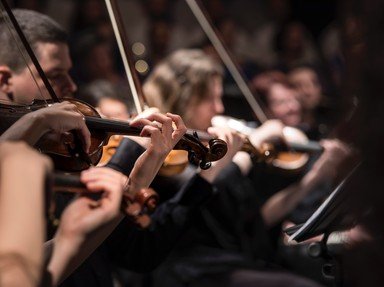Quiz Answer Key and Fun Facts
1. Musical prodigy Wolfgang Amadeus Mozart is, perhaps, one of the best-known composers in Western (art) music. During which musical historical period was he active?
2. Which of the following composers did not ply their trade during the Baroque period?
3. The Romantic period crossed paths with the Classical period that preceded it over about fifteen years. Which of these composers also lived in both worlds, beginning as a Classical composer, and moving into the Romantic period later in life?
4. Kurt Weill was a 20th-Century composer.
5. Jean-Baptiste de Lully gained notoriety among the musical world for how he died... he struck his toe while conducting (by pounding a staff on the floor), creating an abscess that turned gangrenous, causing his death less than three months later. During which musical period did Lully live?
6. A short period in the early 20th century saw the development of a Neoclassical movement, which grew out of a desire to return from the Romantic style to the cleaner 'classical' concepts of clarity, order, balance and emotional restraint. Which of these composers was considered part of the Neoclassical movement?
7. Guillaume de Machaut composed primarily in the early Renaissance period.
8. Modest Mussorgsky, known for such works as "Night on Bald Mountain" and "Pictures at an Exhibition" was a composer of which musical period?
9. All of these composers were part of the Classical period, but which one of them helped transition from the Baroque into the Classical?
10. Which of these names belongs to a composer that published concert band and orchestral music in the 21st century?
Source: Author
reedy
This quiz was reviewed by FunTrivia editor
ertrum before going online.
Any errors found in FunTrivia content are routinely corrected through our feedback system.

